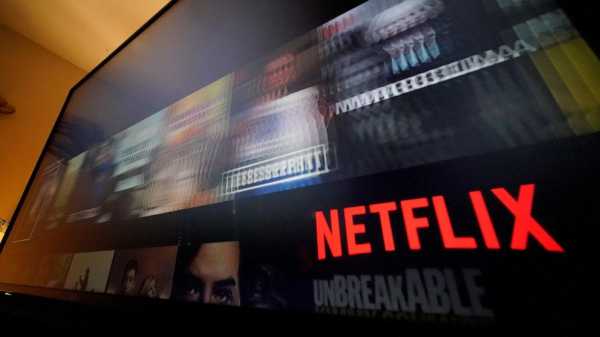
Netflix’s subscriber growth is surging again, providing an early sign that its shift to include ads in a cheaper version of its video streaming service is helping to combat tougher competition and attract cost-conscious customers grappling with inflation.
The company on Thursday disclosed a gain of 7.7 million subscribers during the October-December period, a stretch that included the debut of an ad-supported option for $7 per month — less than half the price of its most popular commercial-free plan. The performance followed subscriber gains that topped analysts’ modest expectations during a July-September period that followed Netflix’s second consecutive quarter of customer losses.
Having regained its momentum, Netflix also announced its co-founder Reed Hastings will relinquish its title of co-CEO, completing a transition that began in July 2020 with the appointment of its programming chief, Ted Sarandos, as co-CEO. Greg Peters, Netflix's chief operating officer, will join Sarandos as co-CEO while Hastings becomes executive chairman.
Hastings, 62, had been Netflix's CEO for more than 20 years after taking over the role from his friend and fellow company co-founder Marc Randolph in the late 1990s.
Losing Hastings as co-CEO “leaves some big shoes for me and Greg to fill," Sarandos said during a conference call late Thursday. “Fortunately, we have four feet to do it with."
As he handed off the CEO baton, Hastings said Sarandos and Peters were “more than ready" to succeed him. “They both have such amazing talents and gifts," Hastings said during the conference call. “Frankly, more and more, they have already been leading the company."
Insider Intelligence analyst Paul Verna interpreted the new leadership as another step in Netflix's evolution from its roots as a technology company led by a mathematical whiz in Hastings to an entertainment service led by Sarandos, who has long negotiated deals with Hollywood studios, and Peters, who oversaw the expansion into advertising.
“The current shift puts advertising in the center of the picture, alongside content,” Verna said.
The upturn in Netflix's subscribers didn't boost profits, largely because the strong dollar weighed on international results. The Los Gatos, California, company earned $55.3 million, or 12 cents per share, during the fourth quarter, a 91% decline from the same time in the prior year. Revenue rose 2% from the previous year to $7.85 billion, a modest gain that suggest some ongoing subscribers may have hopscotched from a more expensive plan to the lower priced ad-backed option.
The earnings fell below the predictions of analysts who shape investors’ expectations. But investors appeared to be more focused on the subscriber gains that were far above projections. Netflix’s shares climbed nearly 7% in extended trading to $337.60. The stock price has double from a five-year low of $162.71 reached last May, but is still far below its all-time high of nearly $701 in November 2021.
Last year’s subscriber downturn, unprecedented since Netflix separated its streaming and DVD-by-mail services in 2011, prompted management to embrace advertising for the first time. The company is now preparing to crack down on the rampant sharing of passwords that has enabled an estimated 100 million people worldwide to watch popular shows such as “The Crown” and “Stranger Things” for free.
Bolstered by its holiday-season uptick, Netflix now boasts nearly 231 million worldwide subscribers – more than any rival in an increasingly crowded field of video streaming competition that includes the likes of Amazon, Hulu, Google’s YouTube, Walt Disney Co. and Apple, the world’s richest company.
Now that consumers have so many choices with only so much discretionary income to spend, Netflix has conceded it will be difficult to attract more customers as it historically has done. Its growth peaked during the first phase of the pandemic when the video streaming service added more than 36 million subscribers during 2020 while most people were corralled at home. By comparison, Netflix picked up fewer than 9 million subscribers for all of last year.
The slowdown prompted Netflix to stop its long-standing practice of projecting how many subscribers it expects to gain from one quarter to the next, an attempt to lessen investors’ focus on that number. Instead, Netflix is putting more emphasis on revenue and profits growth, a goal that figures to be helped by more money pouring in from ad sales.
Sourse: abcnews.go.com






